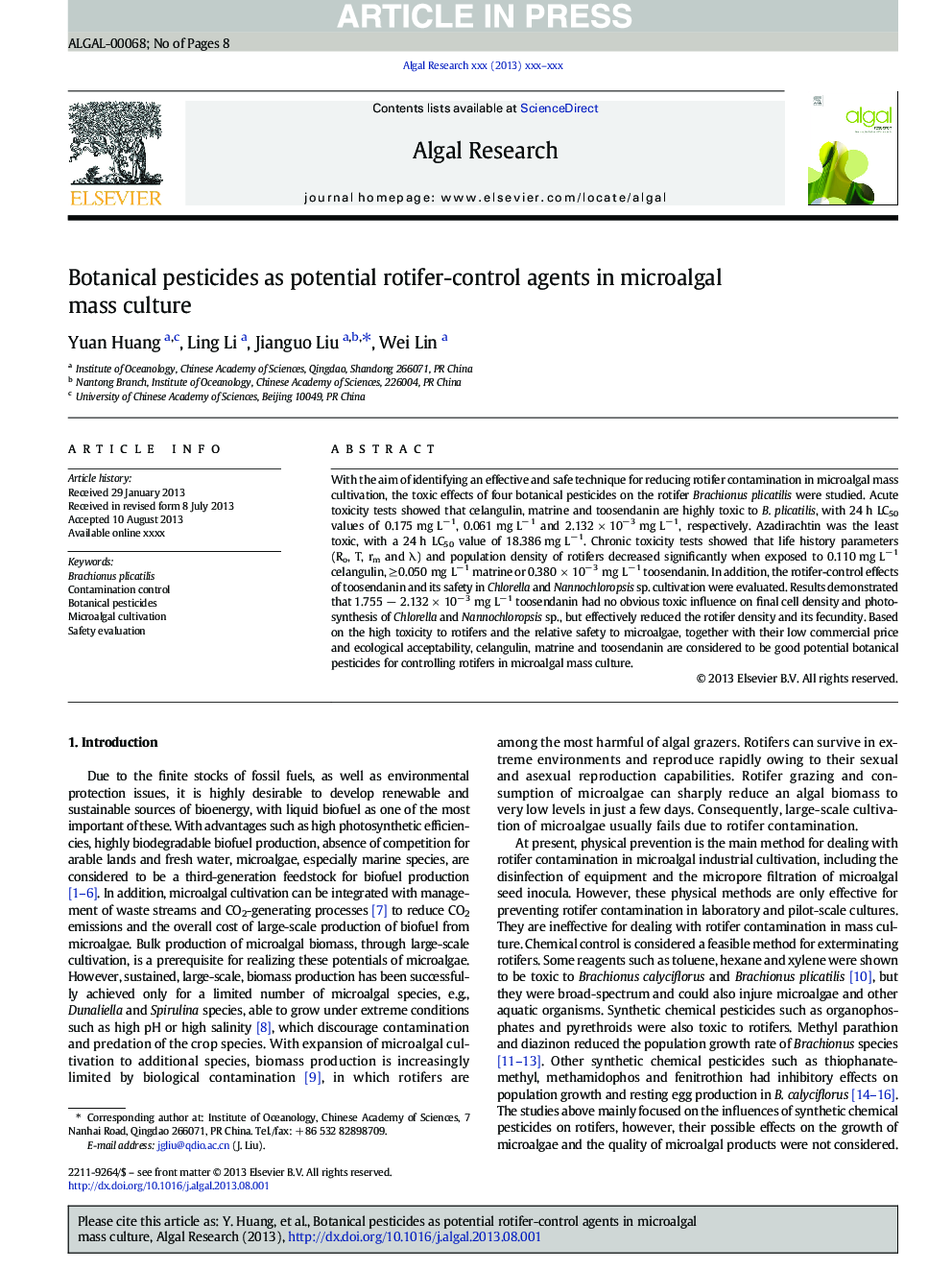| کد مقاله | کد نشریه | سال انتشار | مقاله انگلیسی | نسخه تمام متن |
|---|---|---|---|---|
| 8088475 | 1521827 | 2014 | 8 صفحه PDF | دانلود رایگان |
عنوان انگلیسی مقاله ISI
Botanical pesticides as potential rotifer-control agents in microalgal mass culture
ترجمه فارسی عنوان
آفت کش های گیاه شناسی به عنوان عوامل کنترل کننده روتیفر در کشت توده های میکروالگل
دانلود مقاله + سفارش ترجمه
دانلود مقاله ISI انگلیسی
رایگان برای ایرانیان
کلمات کلیدی
موضوعات مرتبط
مهندسی و علوم پایه
مهندسی انرژی
انرژی های تجدید پذیر، توسعه پایدار و محیط زیست
چکیده انگلیسی
With the aim of identifying an effective and safe technique for reducing rotifer contamination in microalgal mass cultivation, the toxic effects of four botanical pesticides on the rotifer Brachionus plicatilis were studied. Acute toxicity tests showed that celangulin, matrine and toosendanin are highly toxic to B. plicatilis, with 24 h LC50 values of 0.175 mg Lâ 1, 0.061 mg Lâ 1 and 2.132 Ã 10â 3 mg Lâ 1, respectively. Azadirachtin was the least toxic, with a 24 h LC50 value of 18.386 mg Lâ 1. Chronic toxicity tests showed that life history parameters (Ro, T, rm and λ) and population density of rotifers decreased significantly when exposed to 0.110 mg Lâ 1 celangulin, â¥Â 0.050 mg Lâ 1 matrine or 0.380 Ã 10â 3 mg Lâ 1 toosendanin. In addition, the rotifer-control effects of toosendanin and its safety in Chlorella and Nannochloropsis sp. cultivation were evaluated. Results demonstrated that 1.755 â 2.132 Ã 10â 3 mg Lâ 1 toosendanin had no obvious toxic influence on final cell density and photosynthesis of Chlorella and Nannochloropsis sp., but effectively reduced the rotifer density and its fecundity. Based on the high toxicity to rotifers and the relative safety to microalgae, together with their low commercial price and ecological acceptability, celangulin, matrine and toosendanin are considered to be good potential botanical pesticides for controlling rotifers in microalgal mass culture.
ناشر
Database: Elsevier - ScienceDirect (ساینس دایرکت)
Journal: Algal Research - Volume 4, April 2014, Pages 62-69
Journal: Algal Research - Volume 4, April 2014, Pages 62-69
نویسندگان
Yuan Huang, Ling Li, Jianguo Liu, Wei Lin,
